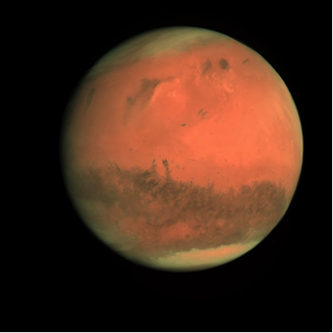Well, let’s see… by ye olde Earth calendar I see today is November 7. With any luck we’ll be sharing our Thanksgiving dinner with the locals. (Har har). That should be just about two weeks away. Sure wish I was sharing it with you. I really miss you, Mary. You’ll never know how much. Say hi to your folks for me.
All my love, Carl
< ≡ ♂ ≡ >
During the next two weeks, the dust storms appeared to increase in intensity instead of tapering down. From the beginning, it had been planned that the crew could ride out the storms, in orbit, for up to two months if necessary. But, that was before the asteroid incident. It had taken a considerable amount of fuel to slow the ship’s rotation and then speed it back up again. This emergency procedure reduced the amount of fuel available to dwell in orbit for any long period.
Staying in orbit requires occasional thruster bursts to maintain the proper orientation and altitude due to the gravitational pull of both Mars and its two moons: Phobos and Deimos. With current fuel reserves, the end of November will be the cut off point for making the go /no-go decision to land or head back to Earth. Unfortunately, that would still leave 19 days remaining in the dust storm season. The scientists at Mission Support are minutely scrutinizing every detail of the weather reports from the Mars Express Satellite, which has been in orbit since late 2003.
Since the crew can’t land yet, the sleeping arrangements have remained the same, with only two usable staterooms. But, after the asteroid hit and some of the supplies and spare parts had been used, as well as there being a smaller stockpile of food now, Sally started a new project in her spare time: redistributing the remainder of the other items in one of the storage staterooms which had a lower bunk. Working steadily, she excavated a path to the bed and cleared it off. Now, if someone wanted to have some solitude or lie down during his or her off duty time, they would have a place to do so.

